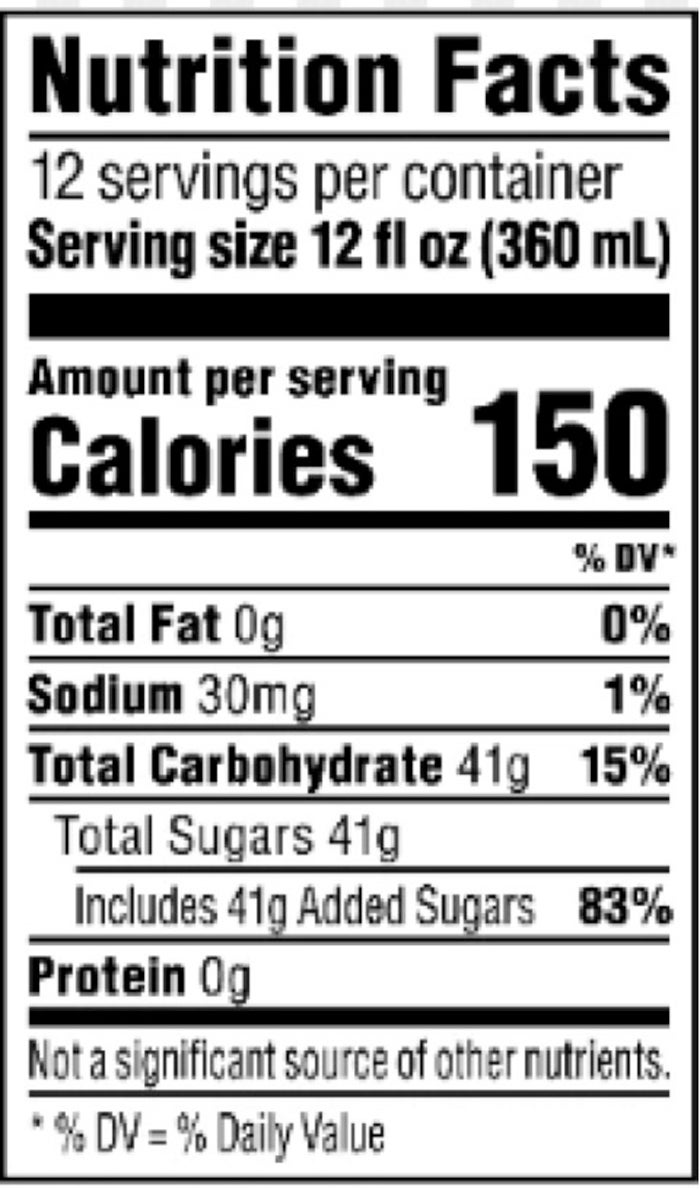Francis Koster: Today’s parents have a heavy responsibility
Published 12:00 am Sunday, January 8, 2023

- The American Heart Association recommends a total of 25 grams of sugar per day for children and teens. This 25 grams includes all sugar from breakfast, lunch, dinner and snacks. This image shows nutrition facts from a can of Pepsi. One can of soda contains 41 grams of sugar – 139% of the recommended daily limit of sugar from all sources. Other than a bit of salt, it also notes ‘not a significant source of other nutrients.’ If you stop drinking one can of soda every day, and do not switch to another sugar-filled snack, you could lose 16 pounds a year.
By Francis Koster
As you may have seen before, data published in 2019 showed the percentage of American adults (both men and women) who were obese went up 500% between 1950 and 2018. [i],[ii],[iii] Since that three year old report was published the situation has gotten worse for both adults and children.[iv]
Just before Christmas 2022, health officials announced that doctors needed a new chart to record children’s health statistics. The old chart, in use for 24 years, had to be scrapped because it did not have a place to put 4.5 million American children who gained so much weight that they literally outgrew the chart.[v] The new category is called “severely obese” – and they probably will not need a retirement savings account because they will likely not live long enough to retire.
A teen-ager who drinks a single Pepsi (41 grams of sugar) and eats nothing else all day is consuming 139% as much sugar as the daily limit recommended by American Heart Association.[vi] Not everybody drinks soda, but more than half of all America youth do every day, and those who do consume around 80 gallons a year. [vii], [viii], [ix] This is a major health risk.
If you saw a group of kids standing in the middle of a street with an out-of-control car heading toward them what would you do? What about those 4.5 million kids? A car is coming right at them.
The main causes of weight gain in children are poor diet, lack of exercise, sometimes coupled with personal or family stress (often caused by low income). When children start to gain unhealthy amounts of weight early, unless adults intervene, it impacts the child for life.
Pre-Covid, One-in-five K-12 students were obese.[x] These children also started puberty around 6 months earlier, had more pimples, and became shorter adults.[xi] Pre-Covid, the rate of childhood obesity had been growing fast for years. During COVID, the rate of childhood obesity nearly doubled! [xii] That is why the doctors had to scrap the 24 year old chart.
There has been a lot of research done about how to save the kids from being hit by the car.
Turns out teaching the parents to change their behavior has more impact than trying to teach the child. It is surprisingly effective when parents (not the kids) of at-risk kids are coached in their home about how to change their behavior.[i] The parental impact is due to three factors. First, it turns out dads have a surprisingly powerful role to play in helping their child adopt healthy weight controlling habits.[ii] In most households food shopping and cooking efforts are done by the women.[iii] When the male in the household joins the female in suggesting foods to be purchased at the grocery, or in monitoring fast food orders, the research show that 1 +1 =3 in the eyes of the kids. Also, to have the male invite female children to walk or toss a frisbee increases their exercise considerably not just for that activity, but also increases their hours of active play with other kids.
Another parental intervention to control weight gain is increasing the hours their kid’s sleep, which results in less weight gain. [i] Send the kids to bed earlier, without their cell phone.
One “do-it-yourself” step you can take is to teach your family members the number of minutes they will have to run to burn off the calories in the fast food they order. Here are some examples: A Big Mac – run 40 minutes, and if you add a large serving of French Fries, add another 1 hour and 17 minutes. Or order a Pizza, and split it four ways – each of you will have to run 43 minutes.[ii]
Parents can get support for these efforts by asking their doctors to begin writing “food prescriptions” and handing it to the child, just as they would write a prescription for medicines the parent can buy. [iii]
Our kids are facing a lot of invisible threats to their health and safety – drug and alcohol abuse, epidemics, violence in public places. But the most common, and deadly, is overeating and lack of exercise. And it is not invisible – it is standing right there in front of you, short, wide, pimply, and anxious. You see the kids. You see the oncoming car. What are you going to do?
Francis Koster lives in Kannapolis and is a retired pediatric healthcare administrator who runs a not-for-profit organization called The Pollution Detectives.
[i] https://www.sleephealthjournal.org/article/S2352-7218(21)00274-6/pdf
[ii] https://www.disabled-world.com/fitness/diets/how-long.php
[iii] https://link. springer.com/article/10.1057/s41271-021-00308-8
[i] https://pubmed.ncbi.nlm.nih.gov/17554247/
[ii] https://www.ncbi.nlm.nih.gov/pmc/articles/PMC9254993/
[iii] https://www.pewresearch.org/fact-tank/2019/09/24/among-u-s-couples-women-do-more-cooking-and-grocery-shopping-than-men/
[i] https://www.livestrong.com/article/384722-how-much-have-obesity-rates-risen-since-1950/
[ii] https://www.cdc.gov/nchs/data/hestat/obesity-adult-17-18/obesity-adult.htm
[iii] https://www.publichealth.org/public-awareness/obesity/
[iv] https://journals.plos.org/plosone/article?id=10.1371/journal.pone.0266024
[v] https://www.healthline.com/health-news/cdc-updates-bmi-charts-for-kids-heres-why
[vi] https://www.hsph.harvard.edu/nutritionsource/2016/08/23/aha-added-sugar-limits-children/
[vii] https://www.cdc.gov/nutrition/data-statistics/sugar-sweetened-beverages-intake.html
[viii] https://www.soocial.com/soda-consumption-statistics/
[ix] https://www.cdc.gov/nutrition/data-statistics/sugar-sweetened-beverages-intake.html
[x] https://www.niddk.nih.gov/health-information/health-statistics/overweight-obesity
[xi] https://doctorsatkaisertpmg.com/2022/09/20/childhood-weight-tied-to-timing-of-puberty/
[xii] https://www.hsph.harvard.edu/nutritionsource/2016/08/23/aha-added-sugar-limits-children/

